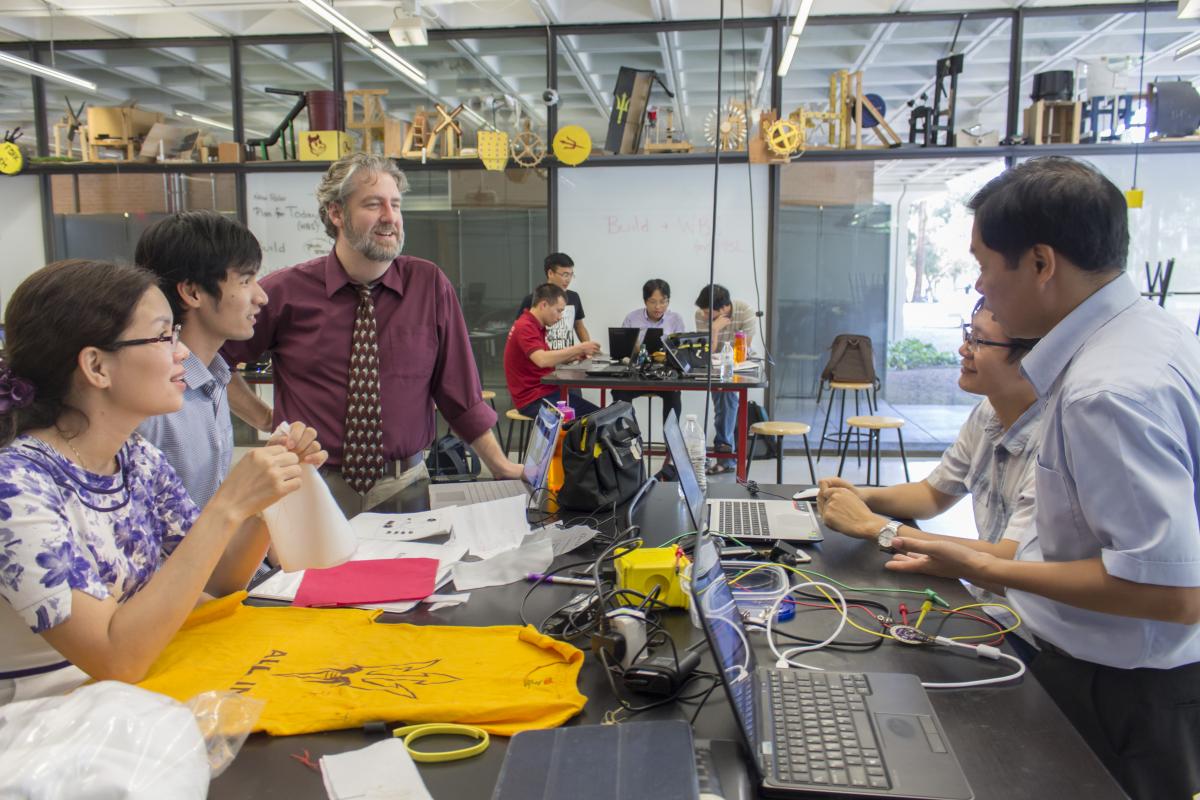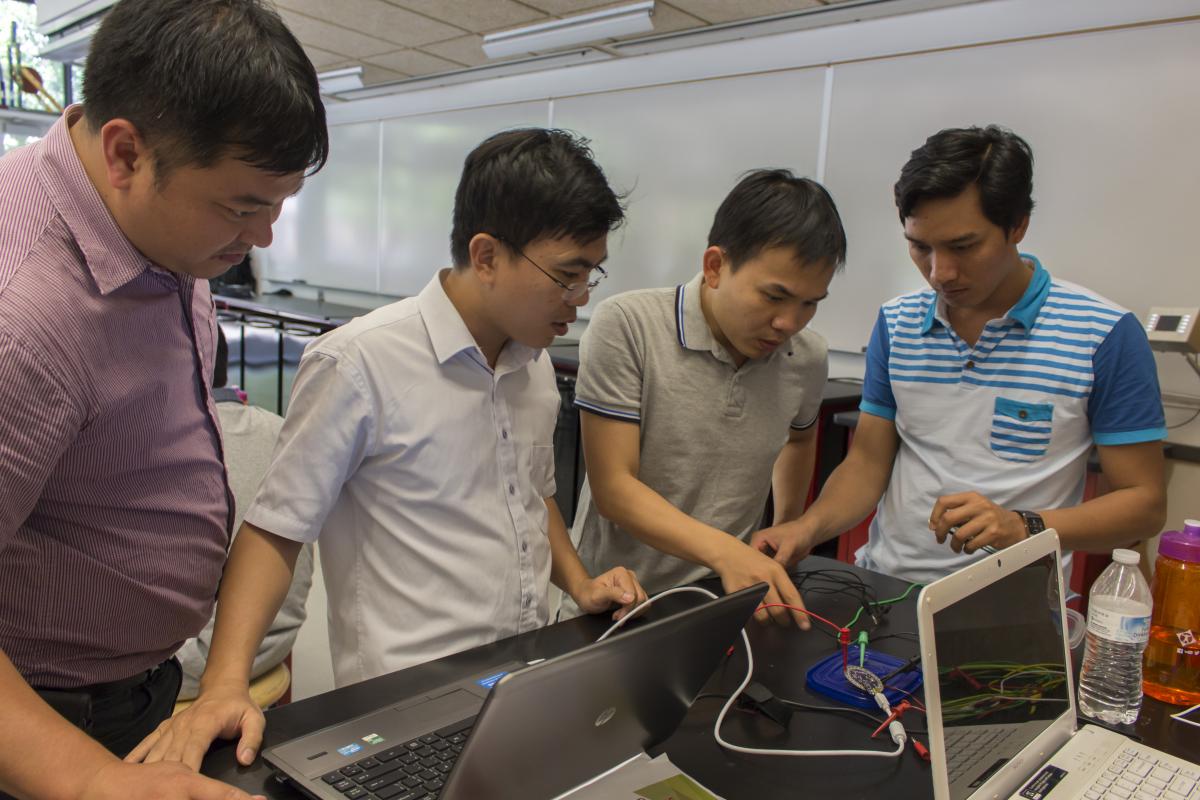During the summer of 2016, two cohorts of engineering professors from Vietnam participated in workshops on outcomes-based assessment and active learning techniques at ASU.
For the vocational faculty workshop, faculty members came from the three universities in Ho Chi Minh City: Industrial University of Ho Chi Minh City, Cao Thang Technical College and the Ho Chi Minh Vocational College of Technology. The faculty members for the university workshop came from five different universities across Vietnam: Ho Chi Minh City University of Technology, Danang University of Technology, Ho Chi Minh University of Technical Education, Can Tho University and Hanoi University of Science and Technology.

David Benson (third from left), gives input as faculty from the HEEAP University Cohort
design a wearable electronic solution for emergency response during a natural disaster.
During the workshop faculty learned about different pedagogies and teaching philosophies, centering on Bloom’s Taxonomy and Kolb’s Learning Styles and Experiential Learning Cycle, as well as a number of different techniques for engaging students. These approaches were used by the faculty to both analyze their own teaching methods and approaches and to intentionally organize and structure future units.
Both of the workshops participated in units on “Integrating Professional (Soft) Skills” where faculty members developed activities such as scripts and videos to use as “entry events” in a flipped classroom. These videos were developed to engage students by exploring practical applications of the content and providing a shift in responsibility for content at the Knowledge and Understanding levels of Bloom’s Taxonomy. In this unit on professional skills, faculty members also developed Content and Language Integrated Learning units to teach their technical subjects through the English language.
A central element of this year’s workshops was a unit on the engineering design process and problem/project-based learning where the faculty developed wearable electronics solutions to a design problem. This project is similar to what can be accomplished in an undergraduate introduction to engineering design course and involves both technical skills (programming, circuit construction) as well as human-centered design principles (ideation, client profiling and interviewing). The faculty members constructed wearable systems for use during a disaster relief simulation and experienced the design project from a student perspective. A large portion of the project time was spent teaching faculty members about how to teach teamwork to undergraduate students.

Faculty from the HEEAP University Cohort developing a wearable electronic
solution to a design problem.
At the end of the university workshop, faculty members participated in a robotics workshop with Yinong Chen using VI/PLE, a visual internet of things/robotics programming language environment developed at ASU. The faculty members programmed robots to navigate a maze using a simple and easy to use process oriented interface.
During their training the cohort learned valuable lessons that would not only benefit their own classes, but also serve to transform education at their institutions and in their country as a whole. In the time since the workshop, faculty members have been posting on social media examples of the activities and methods they have introduced in their own courses as a result of the workshop.
By DAVID BENSON, September 29, 2016

